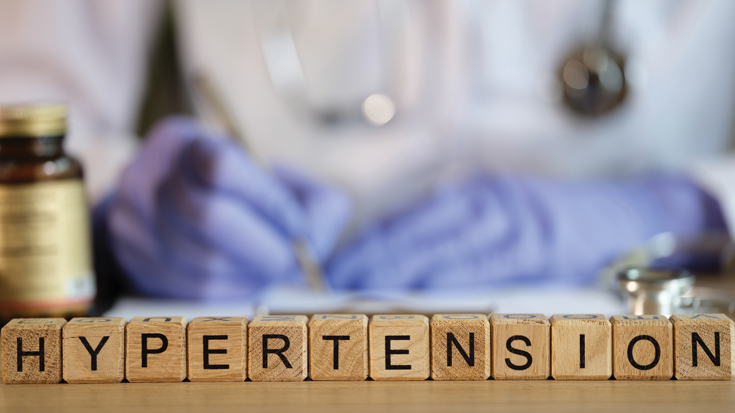Hypertension is one of the most common chronic medical conditions. About 3 in every 10 adults in Malaysia (or 6.4 million people) have hypertension, according to 2019 statistics. It increases the likelihood of stroke, heart attack, heart failure, kidney failure and death if left untreated.
Hypertension is diagnosed when one’s blood pressure is persistently elevated to 140/90mmHg or higher. This is the level above which the risk of serious cardiovascular complications is higher.
Blood pressure reading is expressed in 2 numbers – the higher one is systolic blood pressure, generated by the contraction of the heart, and the lower one is diastolic blood pressure, recorded during the relaxation of the heart. Blood pressure fluctuates throughout the day. It is higher when one is engaged in physical activities, under emotional distress, or in pain. It is lower when one is at rest or asleep.
In an individual with hypertension, the blood pressure remains above 140/90mmHg most of the time. Hence, we need multiple blood pressure measurements over a period of time to diagnose hypertension. When only either the systolic or diastolic blood pressure is persistently elevated, it is still considered to be hypertension.
In most people with hypertension, the cause cannot be identified. This is known as primary hypertension. Even though an underlying cause cannot be identified in primary hypertension, most affected individuals have one or more of these risk factors: a family history of hypertension, overweight or obesity, excessive dietary salt and alcohol intake.
In the minority of hypertensive patients, the hypertension is due to an underlying problem such as kidney failure, narrowing of the kidney arteries (renal artery stenosis), or certain hormonal disorders. This is categorized as secondary hypertension. It is more common among younger people.
Some individuals with secondary hypertension may be permanently cured of their hypertension if the underlying problems can be treated or eliminated. Hence, the initial assessment of an individual with newly diagnosed hypertension, especially a young person, includes tests to look for the underlying cause.
There are a few classification systems for the severity of hypertension. In general, the higher the blood pressure, the more severe the disease. In mild hypertension (stage 1), blood pressure is between 140-160/90-100mmHg, moderate is 160-180/100-110mmHg, severe is 180/110mmHg or higher. The likelihood of cardiovascular complications such as stroke, heart attack or heart failure increases with blood pressure. Hence the risk is highest at levels above 180/110mmHg.

Hypertension generally does not show obvious symptoms, hence the term ‘silent killer.’ Most people are without any symptoms even when their blood pressure is elevated. Hence, regular blood pressure measurement is the only reliable way to diagnose and to monitor hypertension.
Measurement can be recorded with a manual sphygmomanometer or a digital blood pressure device. When using a digital device, it is important to follow the instructions and to use the correct method to ensure accuracy of measurements. It is advisable to take 2 to 3 measurements at 1-minute intervals to minimise errors. Blood pressure can be recorded anytime of the day.
Hypertension must be controlled and treated to minimise the risk of cardiovascular complications such as stroke, coronary heart disease, heart failure and kidney failure. Studies have shown that the risk is lower when blood pressure is kept below 140/90mmHg, preferably below 130/80mmHg.
Lifestyle modifications such as quitting smoking, reducing dietary salt and alcohol intake, regular physical exercise and weight loss can lower systolic blood pressure by 2-5mmHg. These must be practiced consistently to achieve the desired effect. Lifestyle changes will also compliment drug treatment and help to keep drugs usage at the lowest possible dosage.
Blood pressure lowering medications remain the most studied, proven and effective treatment. There are many different types of medications. Each lowers blood pressure by a different mechanism. Hence, different types of medications can be used in combination to lower blood pressure more effectively.
A lot of patients are concerned about the long-term effects of these medications on their kidneys and liver functions. The fact is that, by lowering blood pressure, medications protect the kidneys from being damaged from persistent high blood pressure. Treatment will lower the likelihood of kidney failure in the future.
Renal denervation is a procedure that uses heat to damage certain nerve cells within the wall of the arteries of the kidneys. A balloon is introduced through the groin and placed within the kidney arteries. Heat is generated by electricity or ultrasound in the balloon, which will burn and damage the nerve cells.

Studies in the past 20 years have shown a slight reduction of about 6mmHg in systolic blood pressure after renal denervation procedure. It is still being refined and studied to observe the long-term effects. It may be used in addition to medications to achieve good blood pressure control in certain patients who cannot tolerate medications or patients whose blood pressure is not well controlled despite multiple medications.
 Dr Chong Wei Peng
Dr Chong Wei Peng
Cardiology
Gleneagles Hospital Kuala Lumpur


